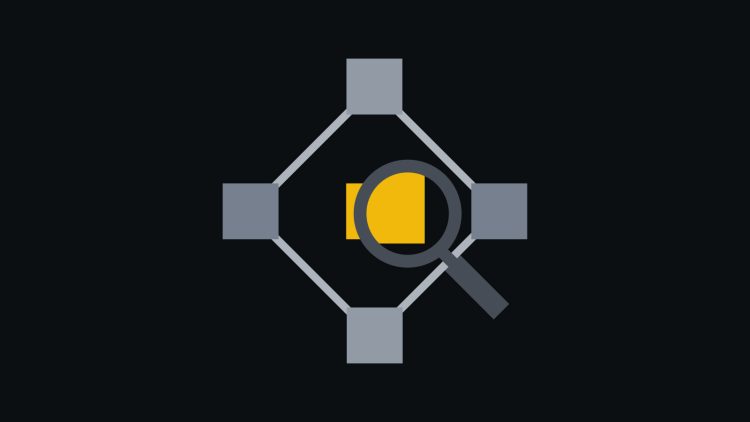Introduction
Blockchain technology has introduced a revolutionary approach to digital transactions and data management, offering decentralization, transparency, and security. However, as with any emerging technology, it has also become a target for malicious actors looking to exploit users for financial gain. Blockchain-based scams are on the rise, with fraudsters utilizing sophisticated tactics to deceive unsuspecting individuals. These scams can range from phishing attacks and rug pulls to fake ICOs (Initial Coin Offerings) and fraudulent cross-chain protocols.
For the average user, distinguishing between legitimate opportunities and fraudulent schemes can be challenging, especially when the scammers use tactics designed to exploit the trusting nature of many in the crypto and blockchain communities. In this article, we will explore the most common types of blockchain scams, how to recognize them, and the best practices ordinary users can adopt to protect themselves and their assets from falling victim to such scams.
Section 1: Common Types of Blockchain Scams
1.1 Phishing Scams
Phishing scams are one of the most prevalent types of fraud in the blockchain space. Scammers typically impersonate legitimate cryptocurrency projects, exchanges, or wallet services in order to steal sensitive information, such as private keys, passwords, or seed phrases.
- How it Works: The attacker might send emails, social media messages, or even create fake websites that appear similar to legitimate blockchain platforms. They then ask users to enter their login credentials or provide their private keys, enabling the scammer to steal the user’s funds.
- Signs of Phishing:
- Misspellings in URLs or email addresses.
- Generic, urgent, or alarming messages requesting sensitive information.
- Requests for private keys, passwords, or seed phrases (legitimate platforms never ask for this).
- Suspicious links that, when clicked, redirect to a fake website.
1.2 Rug Pulls
A rug pull occurs when developers of a cryptocurrency project or decentralized finance (DeFi) protocol suddenly withdraw their liquidity, disappearing with investors’ funds.
- How it Works: In a rug pull, a project may promise high returns, often in the form of staking rewards or token appreciation. Users are encouraged to invest in a new token or liquidity pool. However, once enough users have invested, the developers or project founders withdraw all of the liquidity (the “rug”), leaving investors with worthless tokens.
- Signs of a Rug Pull:
- The project is overly hyped with unrealistic promises of returns.
- The project’s code is not open-source or is poorly audited.
- The liquidity pool or trading volume appears artificially inflated.
- The team behind the project is anonymous or lacks credible social media presence.
- The token’s value drops precipitously after a sudden surge.
1.3 Fake ICOs (Initial Coin Offerings)
An ICO scam occurs when a fraudulent project offers a new cryptocurrency or token to the public in exchange for investments, with no intention of ever delivering a working product.
- How it Works: Scammers launch a fake ICO, convincing investors to send cryptocurrency (often Bitcoin or Ethereum) to a wallet address in exchange for promised new tokens. After the ICO ends, the project team disappears, and the investors are left with nothing.
- Signs of a Fake ICO:
- The project team is anonymous or unverified.
- The project’s whitepaper lacks detail or technical credibility.
- There is little to no online presence or community support.
- Promises of guaranteed high returns or profits.
- The ICO uses aggressive marketing strategies, including unsolicited emails or social media messages.
1.4 Ponzi Schemes and High Yield Investment Programs (HYIPs)
Ponzi schemes are fraudulent investment schemes that promise high returns but rely on new investors’ contributions to pay profits to earlier investors.
- How it Works: Scammers lure victims into a Ponzi scheme by promising high and consistent returns on investment. The scheme works as long as new investors continue to deposit funds, but when new investments slow down, the scheme collapses, leaving the later investors with nothing.
- Signs of a Ponzi Scheme:
- Unrealistically high returns with little to no risk.
- Lack of transparency regarding how profits are generated.
- The ability to withdraw funds at any time (without limitations or penalties).
- The project operates on a referral-based compensation structure.
- The project uses pressure tactics to get users to recruit others.
1.5 Fake Wallets and Fake DApps
Scammers often create fake wallets or decentralized applications (dApps) designed to steal users’ private keys, seed phrases, or cryptocurrency assets.
- How it Works: A fake wallet or dApp might be presented as a legitimate product, but once users enter their credentials or connect their wallets, the scammer gains access to their private keys and assets. Fake wallets can often be found on app stores or phishing websites.
- Signs of Fake Wallets and dApps:
- The app or wallet has poor reviews, or its developer is unverified.
- The app is not open-source or lacks transparency about how it operates.
- The wallet or dApp requests permissions beyond what is necessary to perform its function (e.g., full access to funds).
- The website has an unfamiliar domain or a suspicious URL.
Section 2: How Ordinary Users Can Protect Themselves from Blockchain Scams
2.1 Verify the Legitimacy of Projects
- Check the Website’s URL: Always ensure you are visiting the official website of a project. Look for the URL to be secure (beginning with “https://”) and double-check that there are no misspellings.
- Search for Reviews and Community Feedback: Before investing in any blockchain project, check for community discussions on platforms such as Reddit, Twitter, or Telegram. Pay attention to reviews on trusted forums or aggregators like CoinMarketCap or CoinGecko.
- Verify Team Members: Do some research into the project’s development team. If the team is anonymous or has no verifiable history in blockchain or cryptocurrency, be cautious. Look for team members with reputable backgrounds in the space.
- Audit and Transparency: Ensure the project has undergone a third-party audit of its code, especially for DeFi protocols and smart contracts. Trusted audit firms include CertiK, Quantstamp, and Trail of Bits.

2.2 Protect Your Wallet and Private Keys
- Never Share Your Private Keys or Seed Phrases: Never share your private keys or seed phrases with anyone, regardless of their claims. No legitimate blockchain project will ask for these.
- Use Hardware Wallets: For added security, use a hardware wallet (such as Ledger or Trezor) to store your private keys. Hardware wallets are offline, making them much less susceptible to online attacks.
- Enable Two-Factor Authentication (2FA): For any exchanges or platforms that support it, always enable two-factor authentication (2FA) to add an extra layer of security to your account.
2.3 Be Cautious with Offers that Seem Too Good to Be True
- High Returns with Low Risk: Always be skeptical of projects offering guaranteed returns or high returns with low risk. The promise of unrealistic profits is a major red flag.
- Pressure to Act Quickly: Scammers often create a sense of urgency to pressure users into making quick decisions. Take your time to research before investing or taking any action.
- Check for Red Flags in Whitepapers: A legitimate project should have a clear, well-written whitepaper detailing the technology, tokenomics, and roadmap. Be wary of projects with vague or poorly written documents.
2.4 Use Reputable Platforms and Tools
- Reputable Wallets and Exchanges: Always use well-known and trusted wallets (like MetaMask, Exodus, or Trust Wallet) and exchanges (like Coinbase, Binance, or Kraken). These platforms have been vetted by the community and offer enhanced security features.
- Cross-Check DApp Listings: If you are using decentralized applications (dApps), make sure they are listed on trusted platforms such as DappRadar or State of the DApps. These platforms aggregate data on verified dApps and provide community reviews.
2.5 Stay Updated on Security Best Practices
- Follow Blockchain News: Stay informed about the latest security trends and scams in the blockchain space by following trusted news outlets like CoinDesk, The Block, or Decrypt.
- Educate Yourself: Continuously educate yourself on the basics of blockchain, crypto wallets, and common scams. Awareness is the first step in avoiding fraud.
Conclusion
Blockchain technology offers incredible opportunities for financial freedom and decentralized applications. However, as the space continues to grow, so do the risks posed by scammers and malicious actors. By understanding the most common types of blockchain-based scams and following best practices for security, ordinary users can significantly reduce their risk of falling victim to fraud.
Vigilance, education, and caution are essential in navigating the blockchain ecosystem. Always take the time to verify projects, secure your assets, and be skeptical of offers that seem too good to be true. With the right knowledge and tools, users can confidently participate in the blockchain revolution while minimizing their exposure to scams.
















































